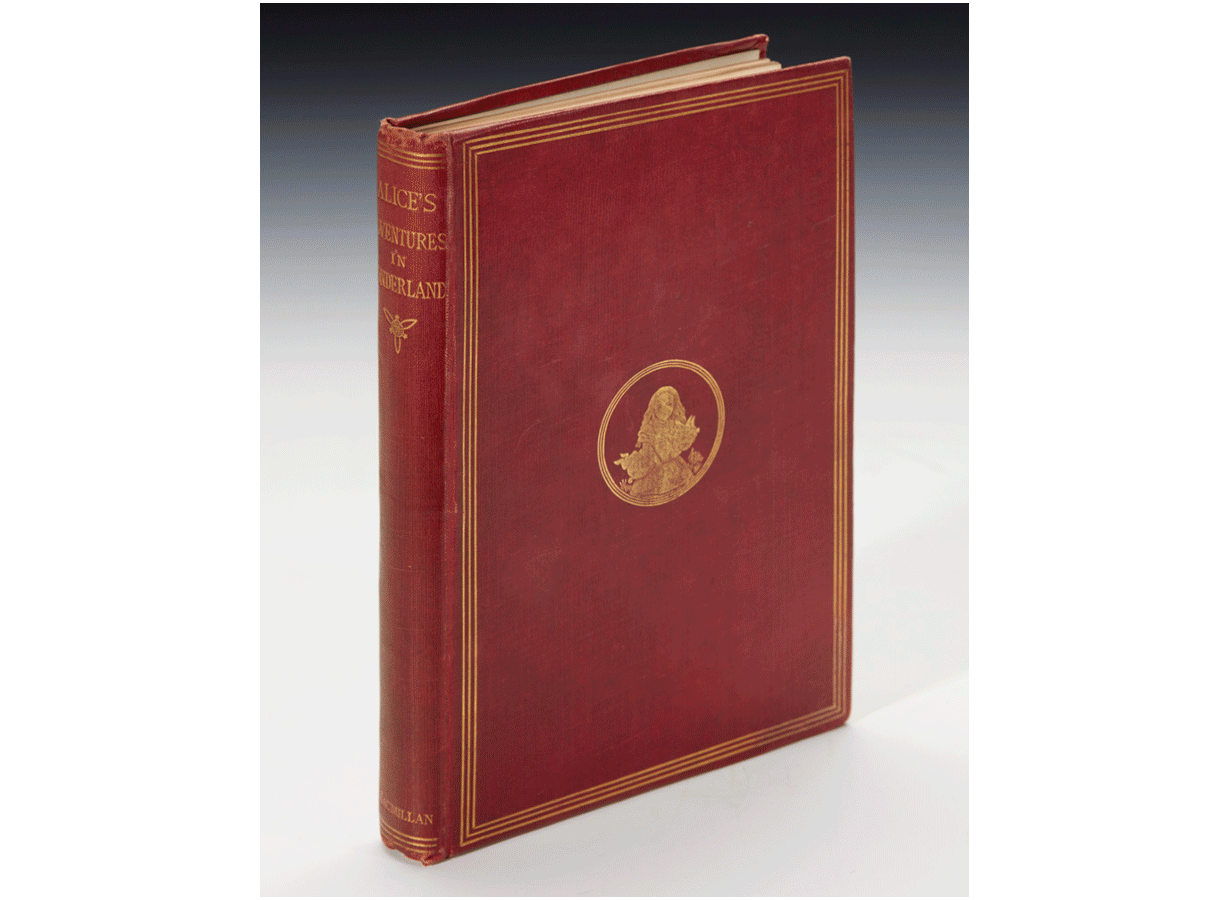A Busy November in Books for Sotheby's London
- by Thomas C. McKinney

Highlight lots from Sotheby's London busy November
It’s a busy November for Sotheby’s, and their London office is no exception. Three noteworthy sales may pique your interest:
- The Library of an English Bibliophile Part VII - November 7
- Travel, Atlases, Maps and Natural History - November 14
- Musical Manuscripts - November 28
Beginning with The Library of an English Bibliophile, the man behind the collection began acquiring over 50 years ago, and this is the seventh sale of his material since 2010. Part VII contains a great deal of important literature, and three of the four lots carrying the highest estimates fall under this category: a second (but first published) edition of Alice’s Adventures in Wonderland, a first edition of James Joyce’s A Portrait of the Artist As A Young Man, and an inscribed copy of Oscar Wilde’s The Importance of Being Earnest.
The Library of an English Bibliophile Part VII is set to take place on November 7 at 10:30 AM BST and its catalog is viewable here.
Travels, Atlases, Maps and Natural History is a sale containing the rare lot that carries an estimate of £500,000+. Petrus Apianus’ Astronomicum Caesareum is a big deal. Here’s what Sotheby’s has to say about it:
THE MAGNIFICENT J.R. ABBEY COPY OF “THE MOST SPECTACULAR CONTRIBUTION OF THE BOOK MAKER’S ART TO SIXTEENTH-CENTURY SCIENCE” (Gingerich). COPIES AT AUCTION IN CONTEMPORARY BINDINGS ARE OF THE UTMOST RARITY; the last comparable example at auction was the Horblit-Patiño copy, sold in our New York rooms, 21 April 1998. The present copy has a similar distinguished provenance, having formerly been in the library of Major John Roland Abbey (1894–1969), the most prolific English bibliophile of his day, whose collection was famed for its fine condition and quality of binding.
This Astronomicum Caesareum, dedicated to Emperor Charles V and King Ferdinand, has been described as "a miracle of printing in folio format: most of the astronomical schemes and instruments have up to six movable parts. Apian received three thousand gold florins from the dedicatees [and] personal appointment as court mathematician" (Woodward). This work contains a broad analysis of Ptolemaic astronomy and 'is notable for Apianus’ pioneering observations of comets (he describes the appearances and characteristics of five comets, including Halley's) and his statement that comets point their tails away from the sun' (DSB). The text also describes the use of solar eclipses to measure longitude; the author’s inventions of the meteorscope (for solving problems in spherical trigonometry) and the torquetum (a predecessor of the equatorial telescope); and a variety of astrological concerns. Most of Apianus’ observations and theories are illustrated by his inclusion of intricate volvelles, which he believed to be of greater use in providing information on the position and movement of celestial bodies, rather than mathematical formulae.
APIANUS IS ALSO NOTED FOR INTRODUCING ARABIC STAR NAMES INTO HIS MAPS. In the present work Apianus includes a revision of his 1536 star chart, with the addition of two more Arabic star names (Angentenar in Eridanus, and Yed in Ophiuchus), and two Latin star names which do not appear the 1536 edition. Apianus knew the work of Islamic astronomer Abu 'l-Husain al-Sufi (A.D. 903-986). "Al-Sufi, in his Book on the constellations (written around A.D. 964), gave a detailed account of the 48 classical constellations (which the Arabs knew through translations of Greek astronomical works and through pictorial representations on globes from other sources), complemented by records of star names of indigenous Arabic origin which he took pains to identify astronomically with the respective Ptolemaic stars. It was from this section on the indigenous Arabic star names in al-Sufi's book that Apian extracted a number of names and mentioned them in his own writings, most of them in the chapter in constellations in his Astronomicum Caesareum of 1540" (Kunitzsch).
The collation of the work is understandably complex. Gingerich calls for an ideal copy to have 83 volvelles, as here.
Travels, Atlases, Maps and Natural History will take place November 14 at 11 AM BST. The catalog is viewable here.
Finally, towards the end of November, Musical Manuscripts as of the writing of this article is advertising a single headlining lot: the complete autograph manuscript by Béla Bartók of his Second Rhapsody for violin and piano from 1928. No complete autographed work by Bartók has ever appeared at auction. Needless to say, estimates are lofty, set between £150,000 and £200,000.
Musical Manuscripts is scheduled for 2:30 PM BST on November 28th. The catalog is not yet viewable online, but more information about the sale is available here.